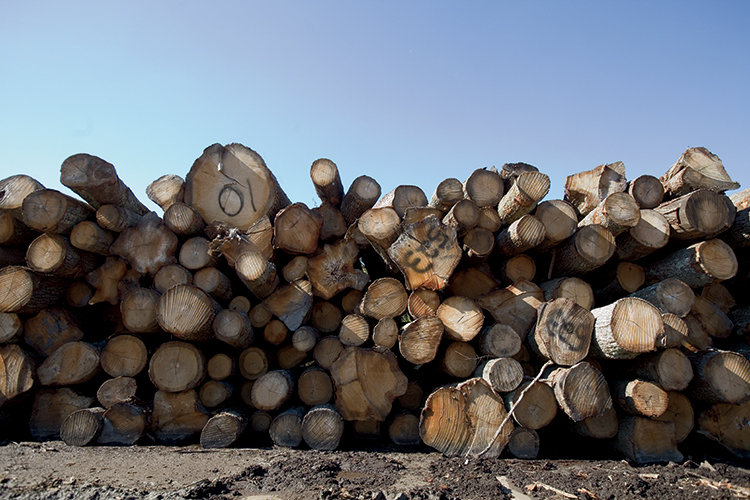Home > North Carolina > North Carolina Crops & Livestock > Trees on Top
Trees on Top
In partnership with: North Carolina Department of Agriculture & Consumer Services
![Nebraska timber [INFOGRAPHIC]](https://eadn-wc01-4177395.nxedge.io/wp-content/uploads/2020/02/Screen-Shot-2015-11-20-at-3.23.22-PM.jpg)
Even in a state with tremendous urban growth, trees cover 60 percent of North Carolina’s land base.
“When you consider how much our urban centers have grown, it’s pretty impressive that we have been able to keep our forestland healthy and productive on that many acres,” says Chris Brown, director of communications for the North Carolina Forestry Association.
The state continues to uphold its historic presence in the forestry industry. After all, North Carolina marks the birthplace of American forestry, a story that dates back to the late 1800s and the Biltmore Estate.
Today, forest products represent the state’s top manufacturing industry, according to data from the North Carolina State University Extension. The industry directly employs 67,500 people with a payroll of $2.7 billion. Using an economic multiplier, the Extension estimates an overall economic benefit of $25.3 billion as of 2012.
In addition, wildlife habitat, outdoor recreation, the environment and aesthetics benefit from North Carolina forests. All told, forestry ranks an invaluable part of the state’s culture and economic climate.

“I think one of the most unique elements of the forest products industry is that not only are we a big economic driver, but we have a presence in every county in North Carolina at some level,” Brown says. “We are an industry that provides employment opportunities for the entire state.”
More than 2,000 manufacturers in North Carolina make a variety of wood products, such as cabinets, furniture, flooring, lumber and paper. Major companies like Weyerhaeuser, Georgia-Pacific and International Paper operate in the state, as do family-owned and -operated sawmills. Global exports to Europe and China provide additional markets for both raw and manufactured product, Brown says. Wood pellets represent an emerging market for North Carolina, which has tapped into Europe’s interest in wood products as a renewable energy source.
Contrary to popular belief, hardwoods constitute 66 percent of the forest canopy with the remaining 34 percent in softwoods, according to the Extension. All of them represent a significant investment of time. The harvest cycle clocks at 30 to 40 years for softwoods and longer for hardwoods, Brown says. Managed forestland shows an investment in the future, as does the industry’s adoption of global sustainability standards, such as the Sustainable Forestry Initiative.
“This certification tells the public that the industry is making sure and documenting that the harvest operations are environmentally sound according to state and federal regulations and sustainability is being addressed for the future of North Carolina,” Brown says.



